Cross-lap joints are a great solution to create clean, continuous lines in a timber frame. The edges of the joint are completely flush. They make it almost appear that the timbers are magically connected. To create a cross-lap joint, you cut halfway through the width of both timbers you connect. They slide together into an extremely solid joint.
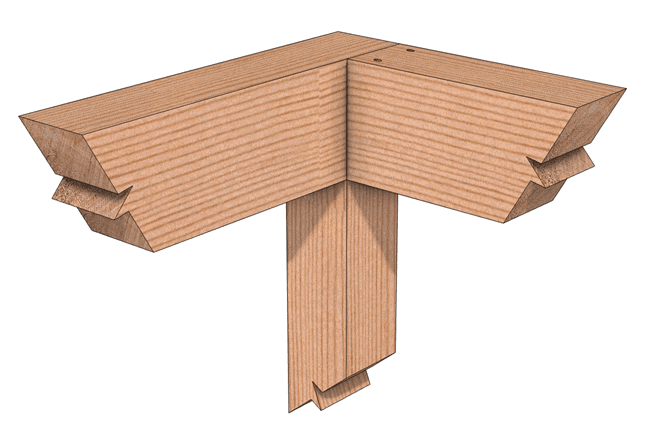
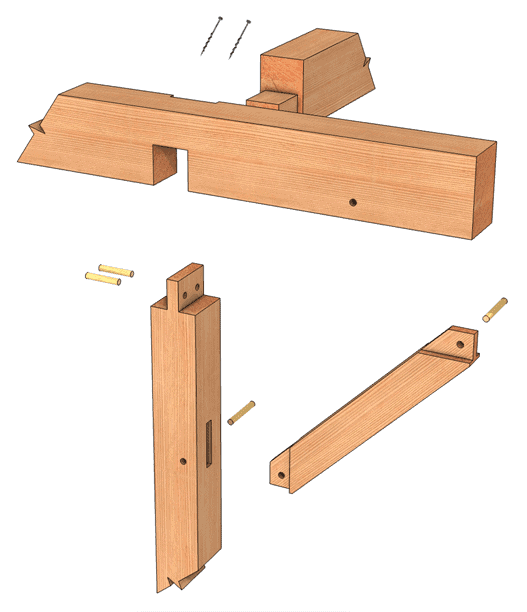
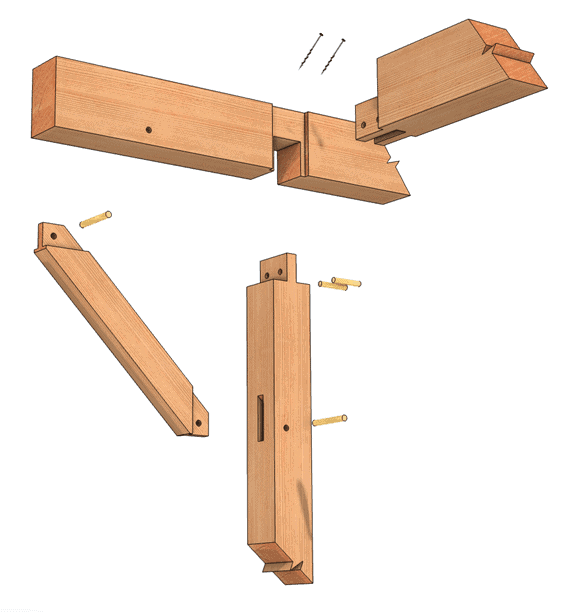
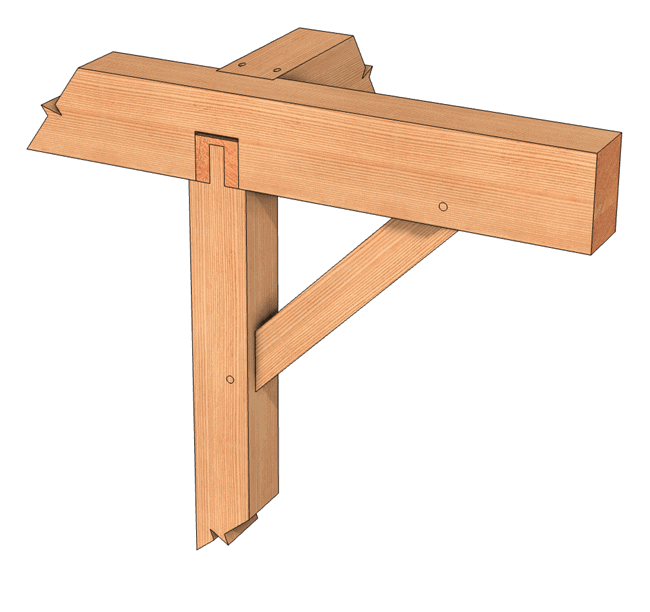
The cross lap joint usually occurs in the middle of one or both timbers, rather than at the end. In this example, the cross lap also occurs atop a post. So, in addition to the tie beam and the plate being cut halfway through to nest together, the tie beam has a mortise cut into it for the tenon on the post to fit into. These two timbers are secured with pegs, and then the assembly is inserted into the plate and secured with structural screws.
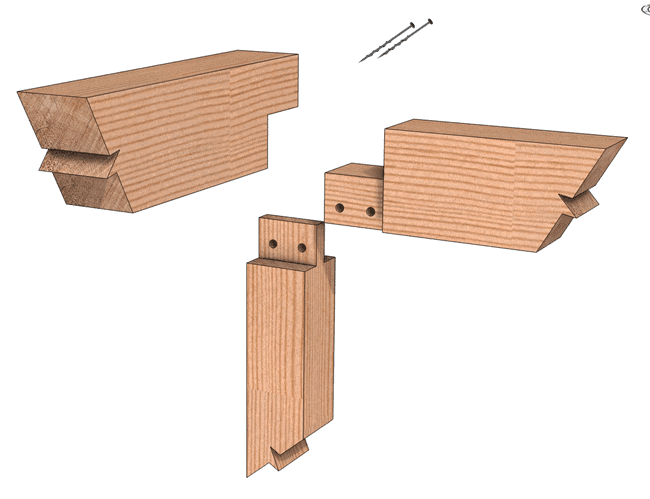
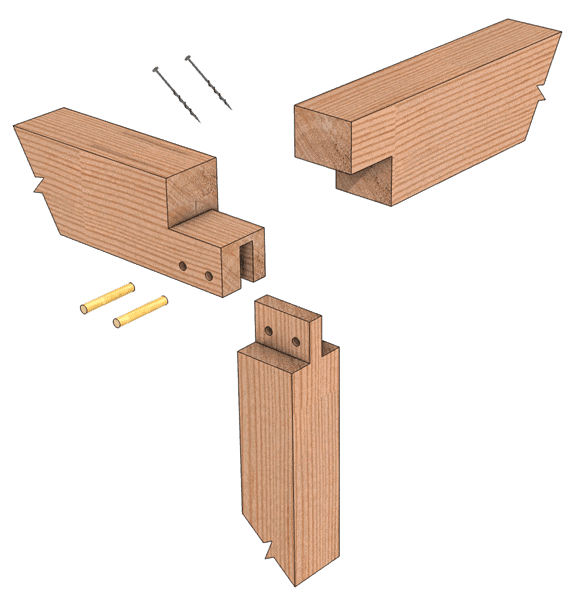
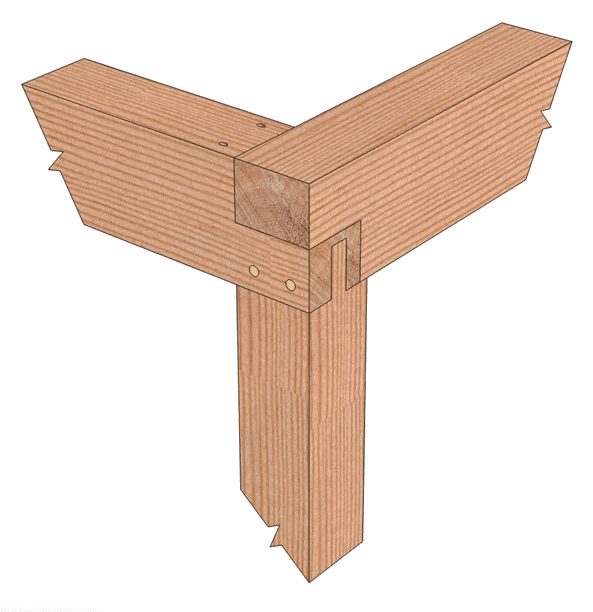
Cutting a Cross-Joint
Just as it sounds, the cross-lap corner joint occurs at an outside corner of a timber frame, where a tie beam and a plate meet. This example also happens to fall on top of a post. So, as in the cross-lap joint, the mortise on the tie beam fits into the tenon on the post and is secured with oak pegs. Then the plate snugs on top of that assembly and is secured with structural screws.
To get the parts of a cross-lap joint to nestle together on a parallel line, you need to cut precisely half the depth of the timbers. The outermost cuts are the “perimeters.” They create the edges of the cross lap, so they must be tight and precisely measured. If you take care with your measuring and cutting, your cross-lap joint will look like the two timbers pass wondrously through one another.
Hi Brice
Where would you use this crosslap joint in the frame, and what rafter system would you recommend? It seems that the plate would not resist much lateral thrust given it is only secured by screws. Thx. B.
Does anyone have examples or experiences of this joint in actual use? It looks like a strong candidate for a frame I’m planning to build, but other information about it on the web has proven extremely sparse.
Hello Graham,
reacting to your post. I have used this joint in the corners of my complicated five-sided garden shelter and it seems to be very good and strong. Honestly, it seemed to me as the best solution for joining in the corner. I have secured it with one large screw from the side instead of two screws as shown in the picture, which I think is better because of worse water access into the holes. I also made the touching surfaces of the horizontal beams slightly tapered, to make it more self-locking. I have no photos of it at the moment, let me know if you would like to see it.
Leroi